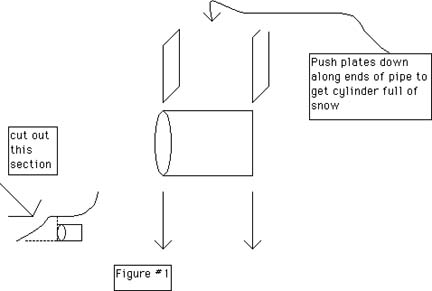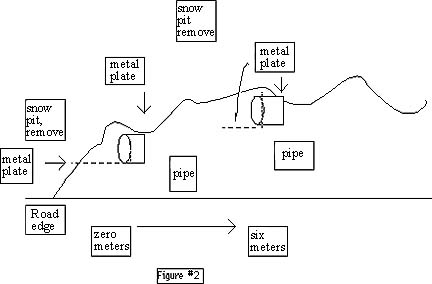
|
Where Have All the Road Salts Gone, Long Time Migrating data | hook | main | background & resources | student
Procedure
These "snow pits" are made by inserting one of the metal plates vertically into the snow and then forcing the other plate in at a right angle creating a shelf in the snow . The 2" diameter pipe is then forced into the top of the vertical wall of the snow pit until it is full of snow. This pipe ("cylinder full of snow") is cut off at he inserted end of the pipe so that a full pipe of snow is attained. This snow sample is then placed in a designated 1lb deli cup; its number recorded and the cover placed on. Samples are then collected at each of the remaining 1 meter sites and returned to school.
Upon returning samples to school conductivity is measured using conductivity meterand data recorded (Have list of all numbered cups available. Have kids remove cover, measure conductivity, place probe in distilled water to keep probe properly calibrated, record conductivity reading and do next cup in series. (NB when my classes do this lab there are as many as 500 individual cups to have data taken from, so I set up sort of an assembly line with people opening cups, measuring conductivity, monitoring the calibrations on the conductivity meter; recording data, washing the cups and covers and drying for redistribution for the next possible snow storm.) Another group of students will enter the "Salt Migration Data Form" into the data base.
Please fill out one of the forms for each and every snowstorm and return it to class, along with seven snow samples on the next scheduled school day.
Site #
Cup# at 0 meter
Discussions Questions/Extensions ...... Back to: TEA Activities Page data | hook | main | background & resources | student |


